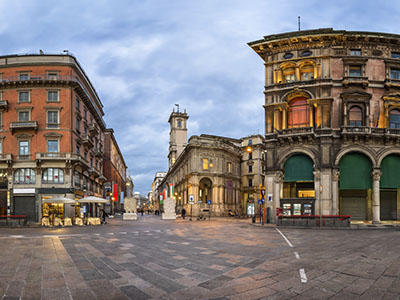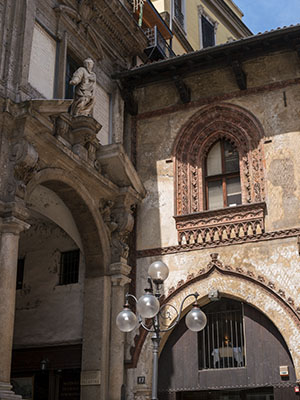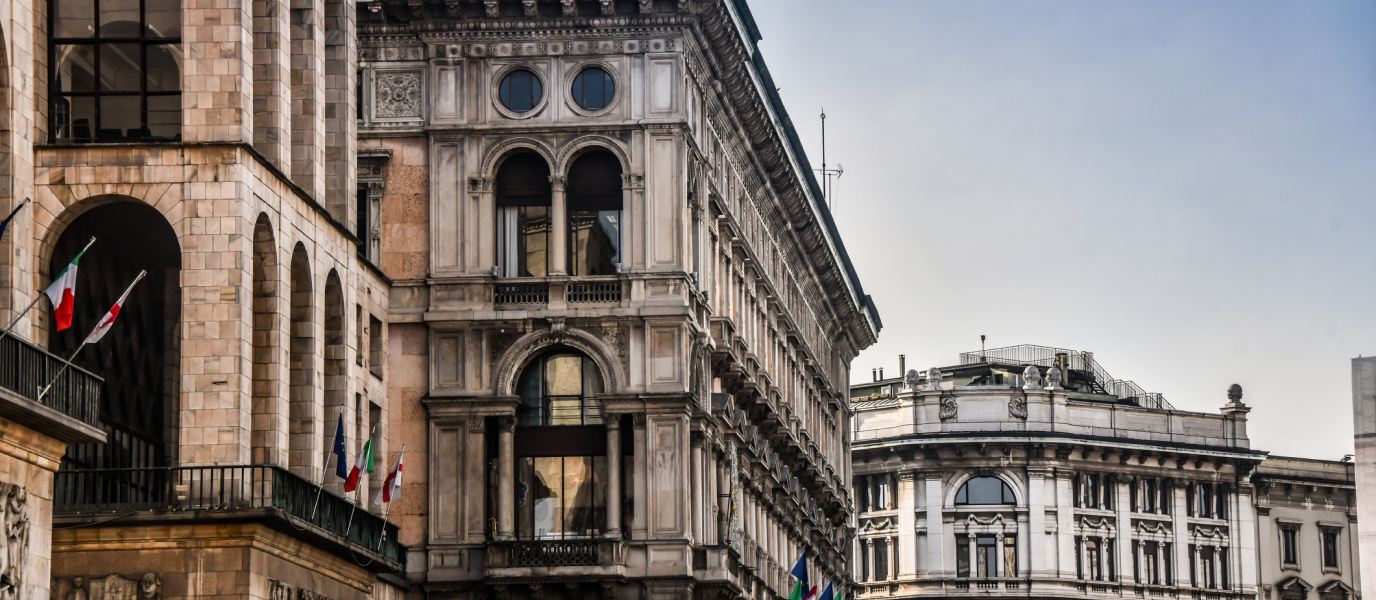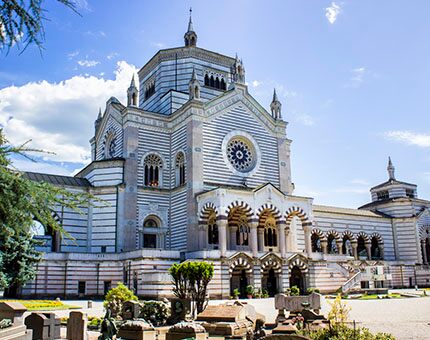If you’re in Milan’s historic centre, you shouldn’t miss the Market Square, Piazza dei Mercanti in Italian, a beautiful and quiet corner located just 50 metres from The Duomo, which once occupied nothing less than the political and social centre of the city. Built in the mid-13th century, in medieval times, this square used to be a constant bustle of people, such as merchants, traders, bankers, and lawyers, as it was the site of public market stalls, the General Citizens’ Council, and the prison.
Today, the Piazza Mercanti is considered to be the best preserved example of medieval architecture in Milan. The Palazzo della Ragione, the Loggia degli Osii, the Palazzo dei Giureconsulti, the Palazzo delle Scuole Palatine, and the Casa Panagirola are the five historic buildings that shape the square, and a visit here gives you an insight into Milan’s medieval past. Read on if you want to know more about these historic buildings.
Discover Milan’s Piazza Mercanti
The date of the creation of the Piazza Mercanti (1228) coincides with the year in which the foundation stone of the Palazzo della Ragione, its oldest building, was laid. The square was originally rectangular and its enclosure had up to six entrances, one for each of the city’s districts. In fact, there is evidence that each of these six alleys was named after a particular guild. The only one that still survives today is Via Orefici, the street of goldsmiths.
As has already been mentioned, from its creation (and until the beginning of the 20th century), the daily life of the Piazza Mercanti was synonymous with commotion. In addition to the shouting of the traders who used to announce their wares, there was also the clamour of the people who came to the square. This was in addition to the loud chimes of the nearby Palazzo dei Giurenconsulti, which announced that a public execution was soon to take place.

It was also common to hear judges announcing ordinances and sentences of public interest from the balcony of the Loggia degli Osii. The noise in the square also went up a few decibels when the open portico of the Palazzo della Ragione hosted citizens’ assemblies and arbitrations, and when ordinances were announced. And if we add to this the comings and goings of the teachers and students of the Palace of the Palatine School, the noise must have reached incredible proportions.
Perhaps for this reason, it was also common to find bankers conversing at the sides of the Palazzo della Ragione. It’s said that the layout of its columns provided the ideal acoustics to secretly exchange important messages.
What to see at the Piazza Mercanti
Palazzo della Ragione
With its characteristic brick façade, this palace in the centre of Piazza Mercanti is a perfect illustration of Milanese civil architecture from the Middle Ages to the 17th century. Completed in 1233, this building has also been known as the Broletto Nuovo from the outset, as “broletto” was the local term for the enclosures dedicated to the holding of town meetings. Its distinguishing feature, which is still intact today, was the ground floor opened by a portico, which allowed the people to be present during the taking of important decisions in the city. In fact, it wasn’t until later that the building incorporated into its structure the current upper floors, dedicated to the holding of meetings of the Great General Council.
It now houses an interesting public museum in which you can see temporary art exhibitions, as well as photographs, sketches, and newspaper clippings that tell us about Milan’s past.

Loggia degli Osii
Commissioned by Matteo Visconti, Lord of Milan, in 1316 on the lands of the Osii family, this Gothic-style building stands out above all for the contrast of its black and white marble. Located on the west side of the square, from the balcony of the Loggia, known in Italian as “parlera”, the judges used to announce public decrees to the people. The front of the balcony still bears the relief of an eagle whose talons capture a prey as a symbol of the justice dispensed inside.
Palazzo delle Scuole Palatine
Next to the Loggia degli Osii is another palace which, from the Middle Ages onwards, was the seat of the prestigious higher school of Milan. It’s well known that, at that time, only the most learned people in Italy were permitted to teach at the school. Today, inside the school you can still see the portraits of the most outstanding students who passed through its classrooms. If we take a closer look, on its façade we can see several statues of St Augustine and a Roman plaque belonging to the poet Magnus Ausonius. It bears an old epigram comparing the grandeur of 4th-century Milan with that of Rome.
Palazzo dei Giureconsulti
This Mannerist-style building, also known as Palazzo Affari, was completed in 1652, during the period of Spanish rule. From its beginnings, it housed the headquarters of the College of Noble Doctors, an institution created to train the future politicians and lawyers of the time. It wasn’t until 1797 that the palace began to be used for other purposes: the headquarters of the stock exchange, the telegraph company, and the Banco Popolare di Milano, and finally, from 1911 to the present day, the Milan Chamber of Commerce.
La casa de Panigarola
Lastly, we come to the fifth historic building that shapes Piazza Mercanti. Also known as the Palazzo dei Notari, the Casa dei Panigarola inherits its name from the family of notaries who built it at the end of the 14th century. It’s said that notaries used to transcribe ducal decrees under its Gothic pointed arches. Today, a very prestigious restaurant in Milan occupies the floor of the portico.
More information:
How to get there:
- By underground: Cairoli-Cordusio, line 1.
- By tram: Orefici Cantu, lines 2, 3, 12, 14, 16, 19, and 27.
- By bus: NM1 line, Via Orefici Piazza Cordusio stop.
Istockphoto Photos:
- Piazza Mercanti 1:








































































